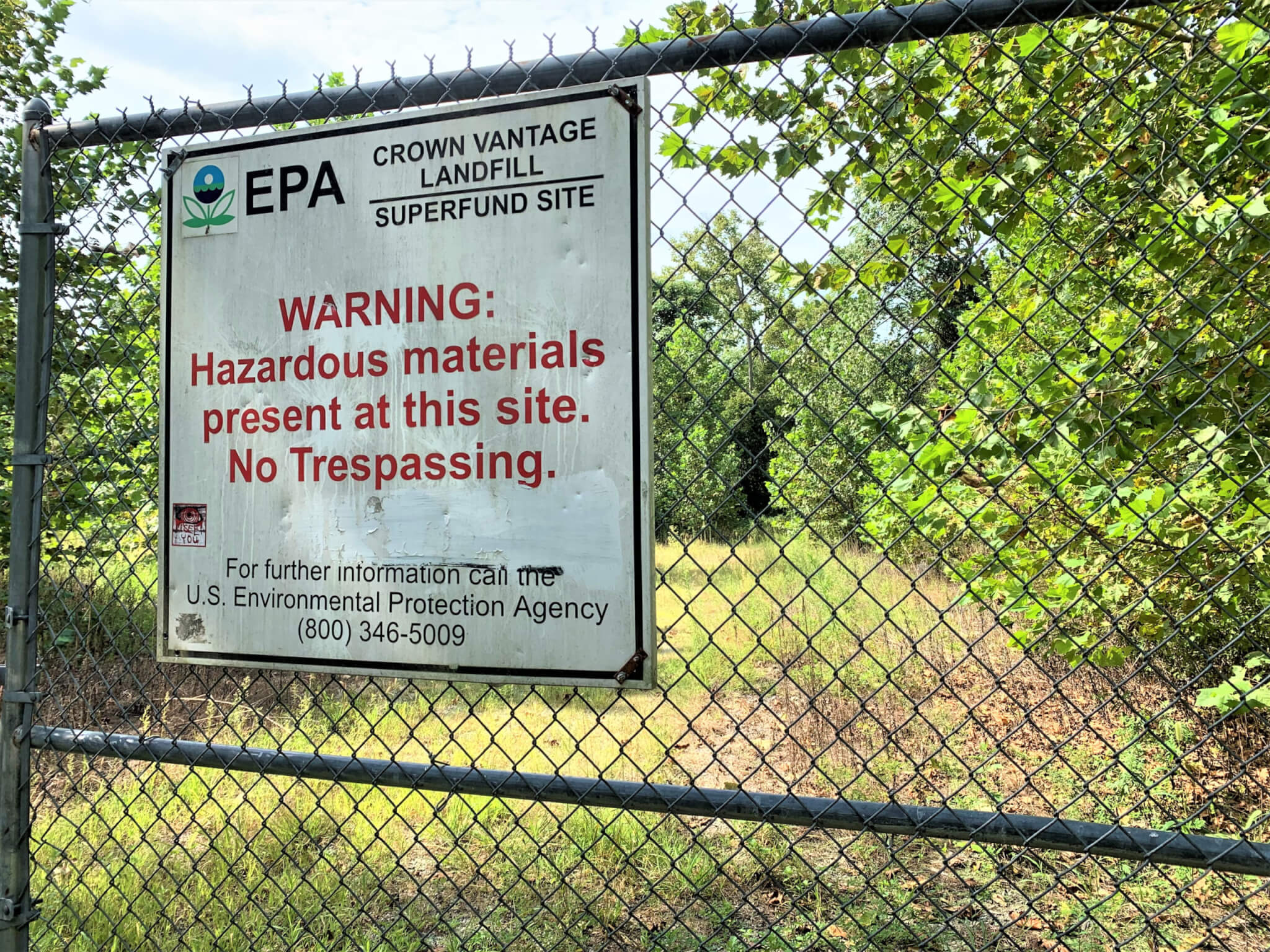
Image via Shutterstock
“Because housing built for Black and Brown households has often been built in direct proximity to contaminated land, these families have been disproportionately exposed to these health and environmental threats.”
A recent report from the Shriver Center on Poverty Law found that in the United States, 70% of hazardous waste sites, including ones in Pennsylvania and New Jersey, are located within one mile of public housing.
That amounts to 77,000 families living in federal public housing and homes paid for with vouchers adjacent or near some of the nation’s most polluted Superfund sites, or areas that have been improperly managed and designated for cleanup by the federal government. These sites include manufacturing facilities, processing plants, landfills, and mining sites.
According to the Environmental Protection Agency, Pennsylvania is home to 127 Superfund sites. These toxic sites, as the Shriver Center’s report points out, are disproportionately near communities of color.
“Environmental racism has played a central role in this devastation,” the authors wrote. “Laws and policies have put Black and Brown communities in direct proximity to environmental toxins. The United States’ allocation of federal housing assistance has been no different; because housing built for Black and Brown households has often been built in direct proximity to contaminated land, these families have been disproportionately exposed to these health and environmental threats.”
Living near these sites can have a real impact on an individual’s health. Toxic waste sites have been linked to birth defects and even some cancers. For instance, an industrial chemical dump in Pennsylvania called the Drake Superfund Site has been linked to an increase in bladder cancer for people that live nearby and are exposed to the contaminated groundwater and soil.
The authors also note that the concerning trend of placing low-income families in public housing near contaminated sites continues to this day. For instance, up until 2016, officials did not tell residents in the City of East Chicago that contamination levels were so high that they should move their families. After months of legal negotiations, residents were moved from the contaminated housing complex and given additional resources to deal with the change.
Many residents in federally assisted housing don’t have the means or opportunity to move to a healthier location, and according to the Philadelphia Tribune, many often don’t even know the place they call home is contaminated.
Earl Wilson bought a house in Eastwick in the 1980s without knowing that it was built over soil and groundwater that contained elevated levels of chemicals like mercury and arsenic due to a nearby landfill. The community was supposed to offer 45,000 people an affordable place to live with schools, parks and commercial areas outside of Philadelphia. According to the Philadelphia Tribune, it took Wilson decades of work before the neighborhood was cleaned up in 2019.
As the Inquirer reports, Philadelphia has four Superfund sites that the government is charged with cleaning up. Ebony Griffin, who works as an environmental justice staff lawyer with the Public Interest Law Center, noted that even when residents are aware of the risks, individuals who live in federally assisted housing often have more pressing issues to deal with, such as working to make ends meet. They don’t have time to attend community meetings and advocate for cleanup.
Griffin also told the publication that people living in public housing are often reluctant to speak up out of fear of losing their homes.
In the Shriver report, the authors encourage government agencies to work to prevent environmental contamination in the future, notify residents when they discover a site is toxic, and include affected communities in the discussion on how best to clean up the contamination.
Communities living near contaminated sites are more likely to have health problems like asthma, which gives individuals in these communities additional risk factors if they are diagnosed with COVID-19.
“There is a tremendous need and benefit for housing assistance, but housing must be provided in a way that protects public health,” the authors wrote in the report. “Only a comprehensive solution, driven directly by the impacted communities, can achieve the justice that is deserved.”
Politics

Pennsylvania redesigned its mail-in ballot envelopes amid litigation. Some voters still tripped up
HARRISBURG, Pa. (AP) — A form Pennsylvania voters must complete on the outside of mail-in ballot return envelopes has been redesigned, but that did...

Biden makes 4 million more workers eligible for overtime pay
The Biden administration announced a new rule Tuesday to expand overtime pay for around 4 million lower-paid salaried employees nationwide. The...

Malcolm Kenyatta makes history after winning primary for Pa. Auditor General
State Rep. Malcolm Kenyatta, who was first elected to the state House in 2018, won the Democratic nomination for Pa. Auditor General and will...
Local News

What do you know about Wawa? 7 fun facts about Pennsylvania’s beloved convenience store
Wawa has 60 years of Pennsylvania roots, and today the commonwealth’s largest private company has more than 1,000 locations along the east coast....

Conjoined twins from Berks County die at age 62
Conjoined twins Lori and George Schappell, who pursued separate careers, interests and relationships during lives that defied medical expectations,...





